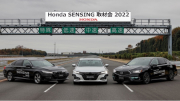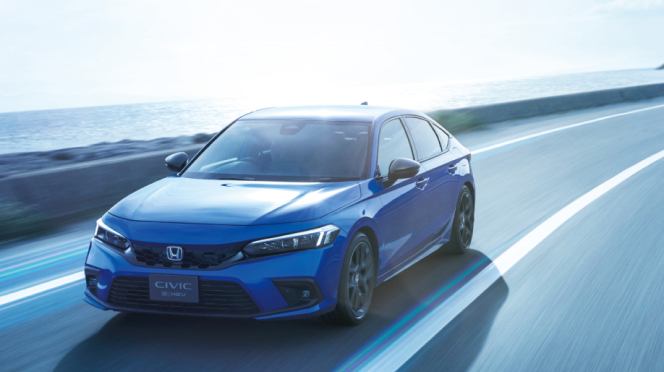Initiatives Aiming for Zero Traffic Collision Fatalities

50% of Current Traffic Collision Fatalities
by 2030, Zero by 2050
In April 2021, Honda announced its goal of achieving zero traffic collision fatalities involving Honda motorcycles and automobiles worldwide by 2050.
By 2030, Honda aims to reduce the number of traffic fatalities caused by automobiles and motorcycles worldwide by 50%.

Traffic Accident Fatalities Worldwide
Approximately 1.35 million people worldwide are killed annually in traffic accidents.*1
Of these, 392,000, or about 30% of the total, involve automobiles, and 378,000, slightly less, are motorcycles. Pedestrians accounted for 310,000, cyclists 41,000, and the remaining 229,000 were classified as “other.” The fact is that motorcycles and automobiles combined account for about 60% of the world's traffic fatalities.
By country and region, the Asia-Pacific region accounts for the majority of traffic fatalities, making it an urgent issue to address traffic accidents involving motorcycles, especially in emerging nations.
- WHO, 2018
Worldwide Traffic Accident Fatalities 1.35 million/year

Source:WHO Global status report on road safety 2018
Honda safety initiatives involve evolving separately and in combination three elements: human ability (through awareness-building activities), mobility performance (technology development) and traffic ecosystem (collaboration, development of system / service development), to comprehensively address the wide range of accident causes.
As a result, in Japan and the United States, the traffic fatality rate per 10,000 vehicles for all Honda automobile, including minicars, is below the average of all major auto OEMs.
Japan
Automobile-related fatality rate projection (registered)
*per 10,000 cars

Source : Honda calculations based on Institute for Traffic Accident Research and Data Analysis (ITARDA) data.
Japan average (overall) data represents automobiles and motorized bicycles based on yearly traffic statistics.
U.S.A.
Automobile-related fatality rate projection (registered)
*per 10,000 cars

Source : Honda calculations based on NHTSA Fatality Analysis Reporting System (FARS)
U.S.A. average (overall): Traffic Safety Facts (TSF) Fatality Rates per 100,000 Registered Vehicles
Toward 2030
As a milestone towards zero traffic collision fatalities, Honda aims to 50% of current traffic collision fatalities involving Honda automobiles and motorcycles worldwide by 2030.
Honda believes a major issue in emerging countries heading towards 2030 is fatal accidents involving motorcycles.
To tackle this issue, Honda will focus on safety education activities including approaching government agencies, and developing and expanding adoption of technologies for its motorcycles, such as advanced brake technologies including ABS*2 and CBS*3, and LED headlight that are highly visible (and make riders more visible from other road users at same time.) and for its automobiles, such as Honda SENSING effective for reducing accidents in both developed and emerging countries alike.
- Anti-lock braking system
- Combined braking system
50% of current traffic collision fatalities by 2030
< Developed nations - Automobiles >

< Developing nations - Motorcycles >

Toward 2050
Honda aims to achieve zero traffic collision fatalities involving Honda automobiles and motorcycles worldwide by 2050.
A major challenge for 2050 is the fatalities of vulnerable road users worldwide, including pedestrians, cyclists and motorcycle riders.
To address this issue, Honda will aim to achieve zero traffic collision fatalities involving Honda motorcycles and automobiles by 2050 by promoting the research and development of Safe and Sound Network Technology to support the prediction and avoidance of risks before accidents occur by connecting all traffic participants (people and mobility) via communications.

Realizing zero traffic accident fatalities by 2050





